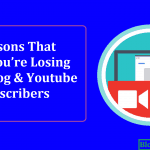Even the word “penalty” can send shivers down our spine, especially if we have a website we’re trying to rank as high as possible.
However, contrary to popular belief, things like duplicate content are not usually subject to a real penalty. In that case, Google can opt not to show our website in the SERPs, which is bad in and of itself.
Still, to ensure our website content is up to Google’s standard, we ought to know what we should avoid doing. Without further ado, here are ten reasons why Google may decide to penalize us.
Contents In Page
1. Cloaking
Cloaking is seriously frowned upon in the world of search engines. It consists of showing search engines like Google and users different links or even content.
For example, the webmaster may hide the content and keywords to a human user but display them when the search engine wants to see the page.
In addition, this may also include showing the users images or Flash while the search engine only gets the HTML text.
2. Redirecting users
Although redirecting users to our new website is a good way of making sure they get the content they need, some people decide to use this to actually show different content to users and Googlebot.
For instance, we may click on one link, hoping to get to a webpage about hair care, but that same link can instantly redirect us to a webpage that deals with online casinos.
This offense is similar to cloaking, as it’s considered online deception.
Also, since the point is to trick as many people as possible, the webmaster will rely on the fact that the Googlebot will index the page most of us want to see, but not the redirect.
Thus, anyone who wants to check out the page that shows up in the SERPs will get redirected to something they didn’t expect to see.
3. Doorway pages
In order for some search engine queries to show up high in SERPs, some users decide to create doorway pages.
These lead to various similar pages, but the end result is to take the user to the same destination page.
Furthermore, pages that serve as doorways are usually never useful — they’re essentially a means to an end.
4. Scraped content
Content is definitely the king, yet only those who care about its quality can write it. As such, scraped content is an all-too-common offense.
What this means is that the webmaster has taken content from a reputable page and published it on their own without adding any unique value to it.
Content has to provide the users with some value, as having thin content is another problem subject to penalty. Thus, some webmasters rely on scraped content as a long-term solution.
However, it usually just makes the search engine penalize them because they haven’t thought about the users and whether or not they would benefit from it.
5. Link schemes
One of the most popular black-hat SEO techniques is using links to manipulate the page’s ranking. However, any sort of manipulation, intentional or accidental, may result in a penalty.
So what are the most common link schemes?
Well, most users decide to trade links for money, i.e., buy or sell them.
However, there are those who will even trade products or services. They may even entice people to give them content and links by sending them free products.
Another example of a link scheme would be larger-than-average cross-linking, as well as creating automated links and using unnatural links.
6. Automatically generated content
Now, Google won’t penalize anyone for content that adds value.
However, given that automatically generated content usually doesn’t make any sense, pages that contain such text will most likely be punished.
In essence, automatically generated content includes articles, blog posts and other forms of text that we create by using programs.
We can get such content by using automated tools or processes such as Markov chains.
However, stitching content from other reputable websites into one that doesn’t add value but has many keywords we want to rank for is also something Google can and will penalize.
7. Keyword stuffing and irrelevant keywords
In line with our previous offense, we need to pay attention to the amount and the meaning of the keywords we’re using.
Having irrelevant keywords such as “car insurance” on a webpage that talks about hair products will tell Google that we are somehow trying to trick our readers.
In addition to that, content filled with keywords doesn’t add much value — it’s usually very repetitive and it often even makes no sense.
8. Thin content and affiliate websites
Thin content relates to pages that are, by the looks of it, bad both in terms of content and tech. For example, such pages will often have very little copy yet many ads.
Furthermore, they might even consist of a few blank pages and have technical glitches that can severely affect user experience.
On the other hand, we also have affiliate websites, which may also fall into the trap of displaying thin content and hidden advertorials.
In the case of these websites, the content is rather thin, and it doesn’t add any value.
Most of the time, the articles consist of product reviews and/or descriptions that have been blatantly copied from the manufacturer’s website, for example.
9. Spam
Of course, no webmaster should even think of using spammy content on their webpage. However, sometimes, it’s not the webmaster but the users who are creating spam and risking a penalty.
If the website is following Google’s guidelines, but there is some user-generated spam on it, Google won’t immediately remove it.
We would get a warning to remove the spam ourselves. However, if the site is nothing but spam, Google has no other choice but to penalize it.
10. Malicious behavior
Finally, behavior that certainly breaks Google’s Webmaster Guidelines is the one that has malicious intent behind it. Most of us have probably run into such a website before.
These are the sites that try to download and/or execute programs without our consent.
They may even have manipulated content that might confuse the users and show them pages that they didn’t want to see.
Of course, any website that involves malware is considered a malicious website.
However, one of the most common situations is when a website changes our preferred browser homepage or search preferences.
That’s when we know that, apart from those ads we’re trying to block, we have run into an “evil” website whose point is not to add value but trick us.








